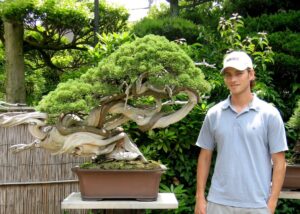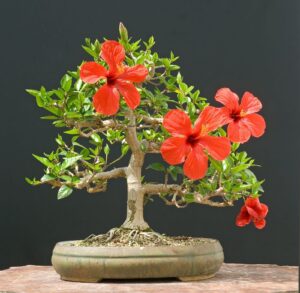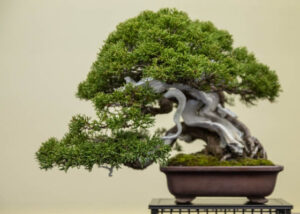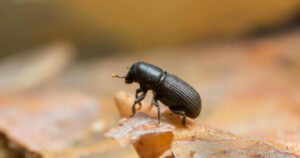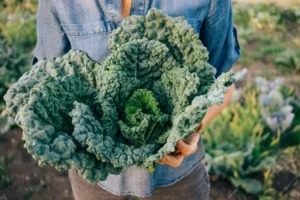Who doesn’t cherish fresh mangoes in their own home? But, not everyone has a home for a giant mango tree in an urban area. So, what can we do? Plant a mango bonsai tree!
You can grow a bonsai mango plant indoors and enjoy delicious, juicy fruits at your own pace. Overwhelmed with how to make bonsai mango tree at home? Don’t worry; in this article, we will guide you on how to grow bonsai mango tree.
How to grow a bonsai mango tree from seeds?
You will need to keep a few things in mind before you decide to develop a bonsai mango tree from seeds.
- You should choose a healthy and right variety of mango seed.
- Whether you pick a regular or miniature mango tree, you’ll need a big pot to fit the growing roots.
Steps:
- Take a small pot and fill it with a mixture of coarse sand and potting soil that is 50/50.
- Place the seed in the pots. If you are planning to grow more than one mango bonsai, add one seedling to each pot.
- Now, add a layer of soil over the seeds.
- For the first two months, water the seedlings often.
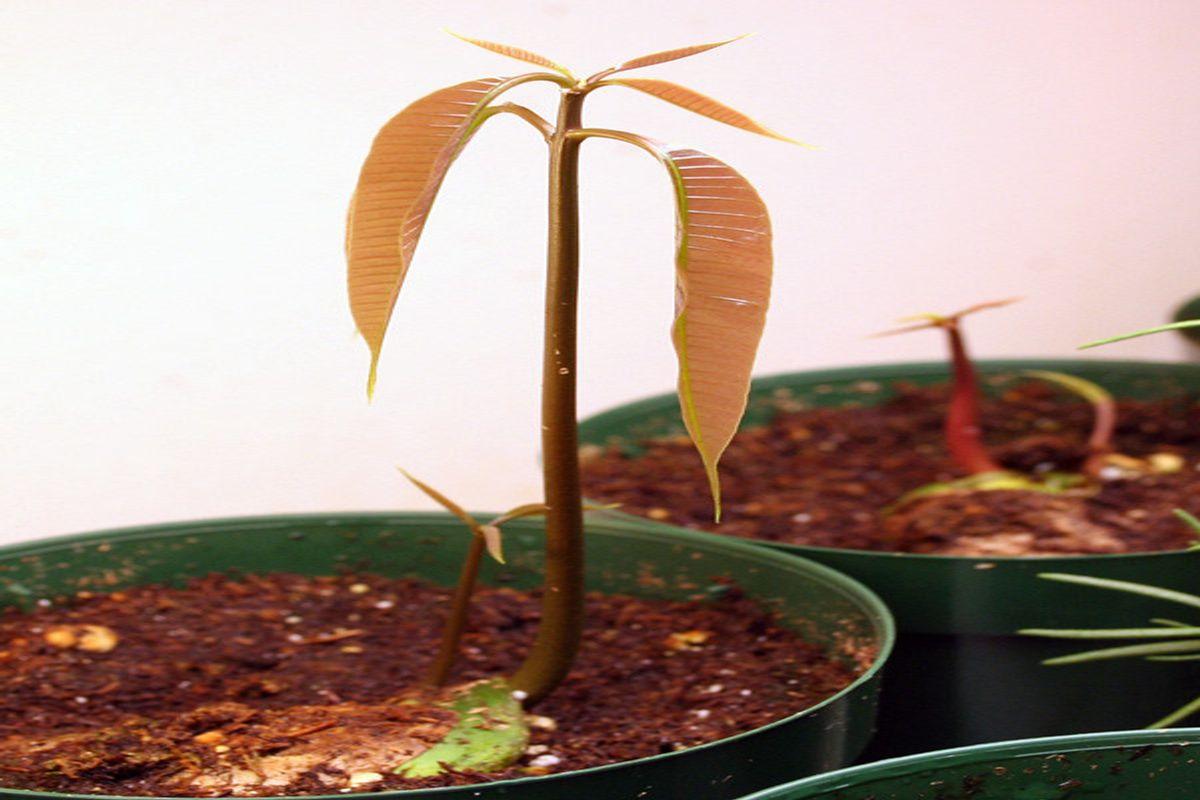
Note: Initially, avoid overwatering the tree. After two months, you can cut back on watering the tree once a week.
After the seedling has sprouted:
- You can plant the sprouted seedling in the bigger container.
- Fill the bottom part of the pot with well-draining soil and place the sprouted seedling on a tray.
- You should adequately water the plant until the soil passes through the drainage holes.
- Keep watering your mango bonsai tree for the first two months at least once a week. You need to provide them with approximately six hours of light. You can witness the delicious fruits when it reaches full maturity.
Most people are concerned about what they should consider while selecting a pot for their mango bonsai plant. Fear not, as we will guide you in this area as well!
Selecting a pot
There are various factors to consider while purchasing a pot or container for your mango bonsai tree. Particularly, the size and design of the pots matter the most.
Size
You should choose a container that is big enough to accommodate the growing root, which will help absorb more moisture and nutrients from the soil.
Design
If you are looking to add a mango bonsai plant to elevate the aesthetic appeal of your home, you should go to a pot that blends well with your decor. A pot treasures the bonsai mango tree’s beauty and creates an appealing aura. You should go for a deep-seated pot that can help the mango grow well as look perfect with your furniture.
Colour
It will be ideal to use a dark-color or black pot as it can absorb the heat in summer. You will have the options for glazed or non-glazed ones too.
Drainage Hole
Mangos do best with excellent drainage. Therefore the container should be at least 20 by 20 inches and have plenty of drainage holes. Another layer of crushed gravel and a layer of pottery at the bottom will improve the drainage and ultimately lead to better results.
How to Make a Mango Bonsai?
If you have purchased a grown mango bonsai tree from a nursery or online, you can grow them in a pot with these steps.
Step 1: You should pick a large pot with a drainage hole. Fill the pot with 50% potting soil and 50% coarse sand.
Step2: Make a circular space between the pot to place the mango bonsai plant. After placing the plant, spread a layer of soil.
Note: You should not cover the graft line, a raised circle at the base of the trunk.
You should put soil at all the pot’s corners until you bury the roots.
Step 3: Continue watering the bonsai mango plant until it reaches the bottom of the pot. After that, for the first three days, you can add more water in a similar manner. After two more months, cut back on watering to once a week.
Note: Water your mango bonsai fruit tree only when it is completely dried out. Once you notice fruit appearing, you should stop watering the plant until all fruit has appeared.
Step 4: You should place your mango bonsai tree where it will receive direct sunlight for four to six hours per day. In the summer, you can put them outside or near a window.
Step 5: You can use organic fertilizer to boost growth and create healthier fruits. Over the soil, pour 1/4 of the mixture. You should water the bonsai mango plant every day for four days. You can repeat this procedure for the first three years.
Step 6: When winter temperatures drop to around 32 degrees Fahrenheit, you can bring an outdoor mango bonsai plant inside.
Now when you have grown your mango bonsai fruit tree, it is time to look after some of the care instructions for healthy growth.
Care Guide of Mango Bonsai Fruit Tree
1) Soil
Any plant should have the right soil to grow, and so should the bonsai mango plant. You will need soil that has a high organic content, is well-drained, and receives a lot of sunshine. A mango bonsai tree grows best in light, well-drained soil that is neutral to slightly acidic in nature.
The ideal pH values fall between 5.5 and 7.5, which denotes balanced to slightly acidic circumstances. Mango bonsai plant prefers roughly 40% compost soil and 20% pumice or mulch. When you first plant it, add some composted manure or compost to the mixture.
2) Watering
The Mango bonsai tree is known to survive without a lot of water if you’ve asked around. Mini mangoes grown in a pot require continuous watering during the first few years of their lives. When the tree starts to produce fruit, water it only sparingly while it is in the pre-flower stage.
3) Fertilizer
While the tree is still growing, you should fertilize it with a balanced fertilizer. Then, when the blooming season is near, cut down on the nitrogen and feed the tree fertilizer that is high in phosphorus and potassium.
4) Positioning
Mangos grow best in tropical climates. You should create tropical surroundings for the bonsai mango plant to grow. It will require a lot of heat and sunlight to flourish. This mango plant needs a minimum of 8 hours of uninterrupted sun exposure to bear fruit and grow healthily. You should consider placing the mango to face west or south if you have an indoor garden.
5)Temperature and Humidity
The Mango bonsai tree loves warmer climates as compared to colder ones. Harsh winter climates do not favor mango growth. Your mango is unlikely to live if the temperature falls below 30 F. It requires a good amount of humidity to flourish.
6) Pests
You must be aware of the tree’s common pests if you truly want it to thrive. The pests to be aware of are spider mealybugs, mites, hoppers, and scale. These parasites attack mango trees, reducing their vigor and decreasing fruit production. You can apply organic insecticides to get rid of such pests early in the life of the tree.
7) Pruning
After planting the mango bonsai tree, you will need to prune it regularly. It will keep the size manageable. Apart from maintaining the size, you can clip off the leaves and stems in the desired shape.
You can chop off all the damaged and unhealthy leaves for better growth and development. It helps the fruit grow faster.
8) Repotting
You can repot the bonsai mango plant once it outgrows the existing container or become root-bound. You can lift it out with chopsticks or a potting shovel if you can’t find an appropriate pot. Use chopsticks or a root rake to clear the dirt from your bonsai tree’s roots.
Cut all the fat and unhealthy roots and put the mango bonsai tree in an existing or new container.
Frequently Asked Questions
Ques1: How to make a bonsai mango tree at home in a colder climate?
Ans: As we’ve mentioned, you can try planting a bonsai mango plant in a place with cooler temperatures. In that case, you must take all reasonable steps to guarantee that the tree receives the maximum amount of heat and moisture that it needs.
Put this in a pot or container that is a darker shade; for instance, black and other dark colors absorb and hold heat better. Make sure the pot’s bottom has suitable drainage holes as well.
You should cover the pot with some bubble wrap once the temperatures start to fall. On average, it simply requires an entirely frost-free environment to grow.
Ques2: How long will it take my mango bonsai plant to fruit?
Ans: Mango bonsai tree requires 3 to 5 years to mature into healthy specimens, but it can take an additional 2 to 3 years for them to begin bearing a crop of fruit each year.
Ques3: How much water does the mango bonsai fruit tree require?
Ans: You need to water them adequately for the first 2-3 years. After that, you can skip the waterings in between.
Ques4: What is the growth rate of the mango bonsai plant?
Ans: The mango tree has a reputation for growing quickly, but remember that speed is relative to the environment. Although they have been known to grow rapidly in their first year, their growth rate diminishes once they begin to bear fruit.
Ques5: Is the mango bonsai tree suitable for indoor areas?
Ans: Yes, you can grow bonsai indoors by creating a suitable environment. You can keep the bonsai mango plant in tiny pots to restrain their growth indoors while enjoying the fruits.
Ques6: Can I eat the fruit of the mango bonsai tree?
Ans: Yes, you can! As far as you haven’t used too many chemical fertilizers on your bonsai, you are good to go.
Ques7: Which pot to use for mature mango bonsai trees?
Ans: A big enough pot for the roots of a fruiting healthy mango tree is ideal. The pot should measure roughly 20 by 20 inches. It should have a drainage hole. Pick a visually appealing pot. Additionally, it needs to be deep enough to support the tree’s healthy growth and expansion.
Conclusion
Growing the “King of fruits” in a miniature form is an ideal way to enjoy juicy and fresh mangoes. You can easily reap the delicious fruits of the mango bonsai fruit tree at your home while doing minimum work.
If you still have any queries on how to grow a bonsai mango tree, drop them down in the comments, and we will get back to you.
Related Articles
- Top 10 Bonsai Tree for Sale in India
- Unique Bonsai Gifts: Perfect for the Plant Enthusiast
- Bonsai Tree in a Terrarium – An Ultimate Guide To Build Bonsai Terrarium.
- Redwood Bonsai Care Guide: How to Grow, and Bonsai For Sale
- Growing Kale Indoor From Seeds With LED Grow Light
- Best Bonsai Plants to Grow in Summer

